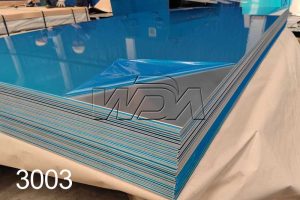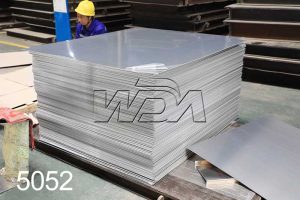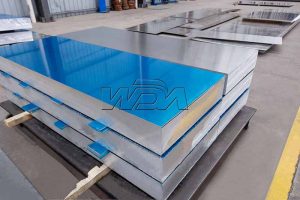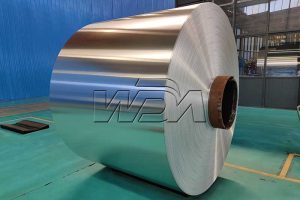Short Introduction
When it comes to aluminum alloys, 3003 H14 and 5052 H32 are two popular choices in various industries. Whether you’re involved in construction, automotive, or aerospace, understanding the differences between these alloys is crucial for making informed decisions. In this article, I will introduce the properties, applications, and advantages of both 3003 H14 and 5052 H32 aluminum alloys.

3003 H14 Aluminum Alloy
3003 H14 aluminum alloy is a medium-strength, non-heat-treatable alloy primarily composed of aluminum, manganese, and trace amounts of other elements. This alloy is known for its excellent corrosion resistance, making it suitable for outdoor applications. The H14 temper signifies a strain-hardened condition, imparting increased strength.
The 3003 H14 alloy offers numerous advantages. Its superior corrosion resistance, combined with good formability and weldability, makes it ideal for applications such as architectural roofing, siding, and gutters. Additionally, this alloy is often used in food and beverage packaging due to its non-toxicity and ability to withstand extreme temperatures.
5052 H32 Aluminum Alloy
The 5052 H32 aluminum alloy is a high-strength, non-heat-treatable alloy composed mainly of aluminum and magnesium. The H32 temper indicates a strain-hardened and stabilized condition, providing increased strength and improved formability compared to the H14 temper.
5052 H32 alloy is highly regarded for its excellent corrosion resistance, particularly in marine environments. It finds extensive usage in marine components, such as boat hulls and structures. Furthermore, this alloy demonstrates good workability, making it suitable for sheet metal fabrication, automotive parts, and architectural applications.
3003 h14 vs 5052 h32
When comparing 3003 H14 and 5052 H32, the key difference lies in their strength levels. While both alloys offer excellent corrosion resistance, 5052 H32 exhibits higher tensile strength due to the addition of magnesium. Consequently, 5052 H32 is better suited for applications that demand increased structural strength.
In summary, the choice between 3003 H14 and 5052 H32 aluminum alloys depends on the specific requirements of your project. If you prioritize corrosion resistance, formability, and weldability, 3003 H14 is an excellent choice. However, for applications that necessitate enhanced strength and improved formability, 5052 H32 is the preferred option. Consider these factors carefully to ensure optimal results in your chosen industry. If you need more details, just email me wandaaluminumsheet@gmail.com or whatsapp me +8613619844700 any time.




